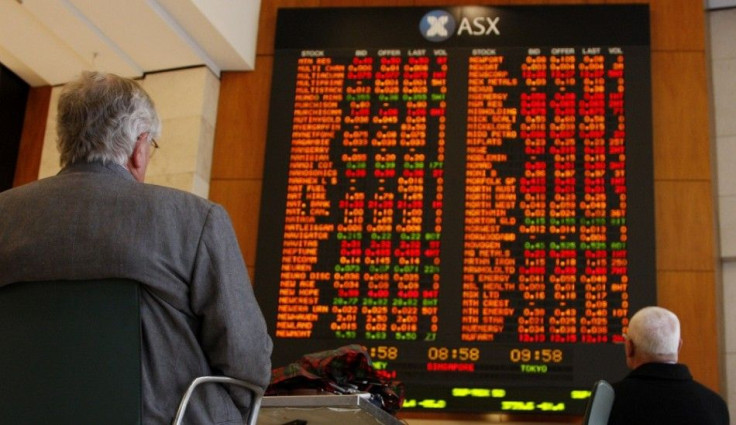Australian Stock Market Report – Afternoon November 12, 2014

Sellers grow in confidence over the day
Australian shares continued to lose ground over the course of the afternoon on Wednesday. Buying support was scarce in the second half of the session which was reflected in the final result, which saw the ASX 200 end at session lows. At the close of trade the ASX 200 was almost 1% lower or 54 points.
Every ASX sector ended in the red although the technology group fell by the greatest margin led by Computershare (CPU). Investors were unsettled by outlook comments at the groups AGM. In August, CPU management highlighted that full year earnings per share in 2015 would be around 5% higher than 2014. At the company's annual meeting today the group indicated that so far earnings were tracking to plan for the full year, although earnings per share in the first half of 2015 would be down on the same period last year. CPU stressed they were not altering guidance, although the operating environment had softened since August. This assessment startled investors and the shares ended the session lower by 4.7%
Consumer facing stocks were under pressure with several results over the session galvanising the conviction of sellers. Myer (MYR) was one of the noted underperformers on the heels of weaker sales numbers. The department store announced that total sales rose 0.1 per cent to $691.6 million for the 13 weeks to October 25, compared to the same time a year ago. Like for like or comparable sales, which exclude the impact of store openings and other factors were up by 0.7 per cent. Both measures were well below market expectations and resulted in the shares ending down by 7.4%.
Still on the theme of weaker spending; wage growth as measured by the Wage Price Index (WPI) for the 3rd quarter was released. The index rose by 0.6% in the September quarter and remained steady in annual terms at 2.6%. The report showed that annual wages growth remains at its lowest level since the series began in 1998. Private sector wages rose by 0.6% in QIII to be up 2.5% on a year ago while wages in the public sector lifted 0.5% and 2.7%pa. Wages are being compressed across all sectors in the economy, a major trend of the past few years which looks set to continue. Significantly wages growth is well below the decade average of 3¾% and confirms the tepid inflation pressures from labour costs as seen by the RBA. Real wages growth is close to zero which is not favourable for consumer spending over the coming year although it will be a factor that will help engineer enhanced jobs growth.
Elsewhere the Westpac-Melbourne Institute Index of Consumer Sentiment recorded a small lift over November, rising by a modest 1.9% in November. Confidence remains entrenched in negative territory and stands 12.5% lower than a year ago The survey however reveals that sentiment remains fragile and is mired in negative territory. Sentiment is being weighed down by job security fears and concerns over the economic outlook. The Unemployment Expectations index rose by 2.7% (an increase indicates that respondents are more pessimistic about the labour market). The headline index stood at 96.6 in November (a level below 100 means that the number of optimists outweighs the number of pessimists). Consumer sentiment has been anchored in the pessimistic zone for the past nine months. While the level of sentiment rose, the result was disappointing given a the solid rise seen in equity markets, lower oil prices and a stabilisation in the Aussie dollar over the past month.
The weaker data on wages and consumer confidence saw the Aussie dollar surrender earlier strength ending the session at 86.8 US cents.
[Kick off your trading day with our newsletter]
More from IBT Markets:
Follow us on Facebook
Follow us on Twitter





















